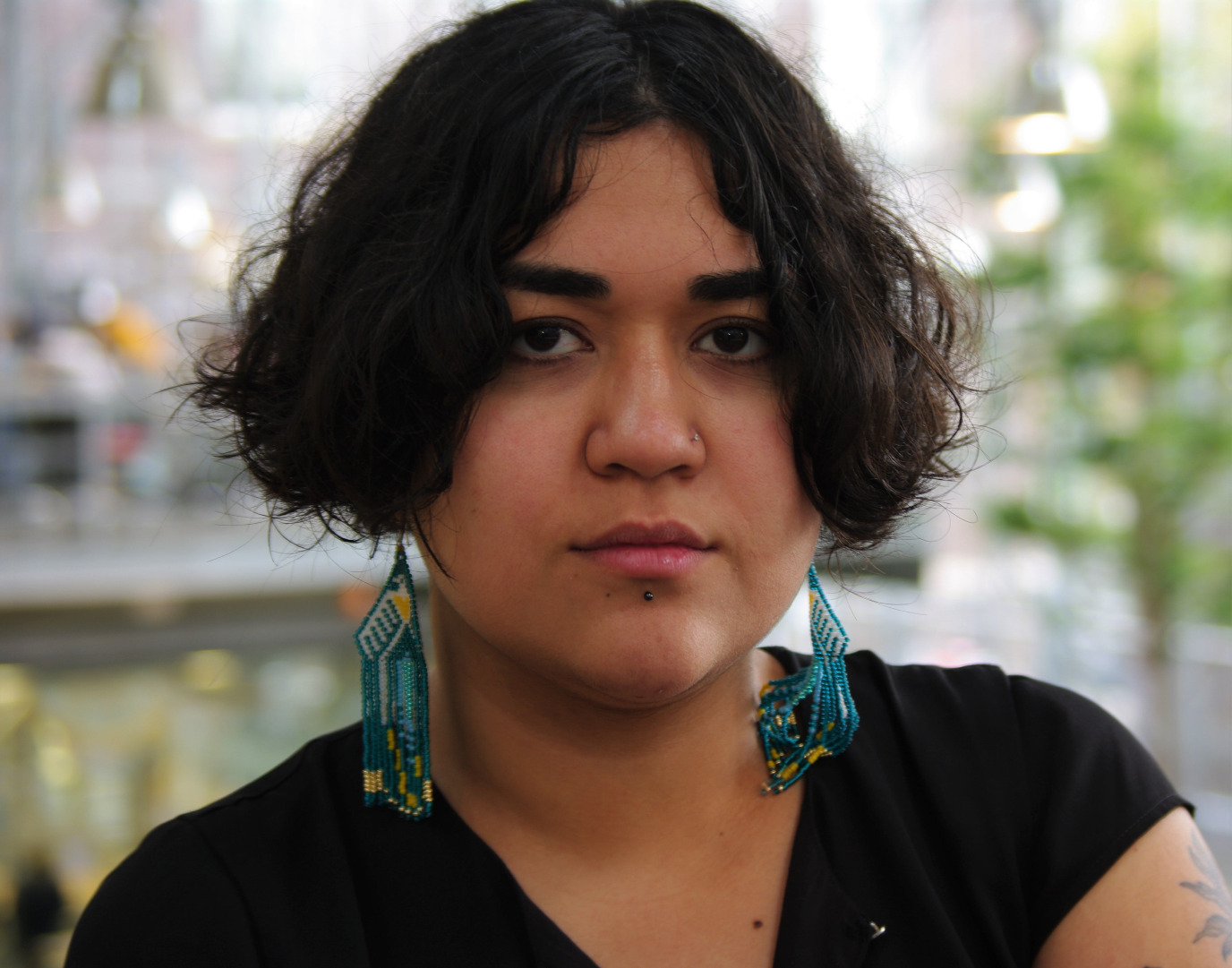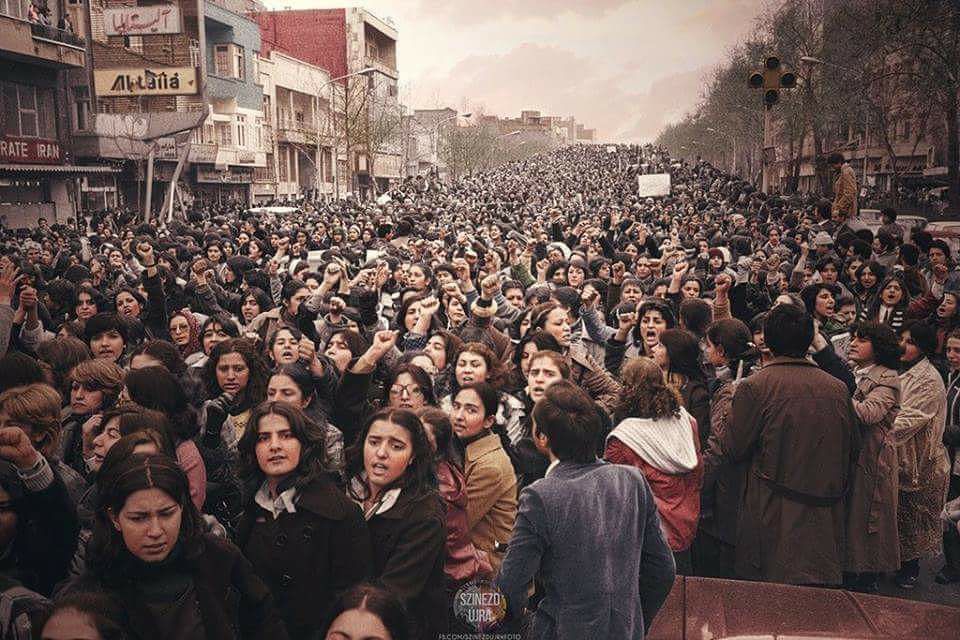Iran has a long history of feminist resistance
Last autumn, anger over the death of Jina ‘Mahsa’ Amini led to mass protests in Iran, and there is still a lot of unrest. It was not the first time Iranians took to the streets: the history of feminist resistance goes back to far beyond the foundation of the Islamic republic in 1979. Dr Donya Ahmadi, assistant professor of International Relations at the Faculty of Arts, researches and documents the role of female activists in the political developments of 20th and 21st-century Iran.
Text: Marjolein te Winkel

During her research into the historiography of feminist resistance in her native country, Donya Ahmadi discovered that it contained gaps. Not because there had not been any resistance, but because it had not been written about. Ahmadi: ‘The Iranian Professor of History Afsaneh Najmabadi once aptly described the historiography of present-day Iran as one of “Great men and their great ideas”. Even when talking about women’s rights, all that is written about is what men have achieved in that respect.’
Ahmadi searches the archives for materials, such as activist pamphlets, and she talks to eye witnesses, thereby documenting the history of a societal movement that for a long time received little attention. ‘That is vital knowledge,’ Ahmadi stresses. ‘We can’t understand what is happening now without looking at the history. The anti-government protests are not an isolated event; they are part of a longer tradition of resistance against oppression.’
A period of flourishing
Over one hundred years ago, during the first two decades of the 20th century, known as the constitutional period, the intellectuals in Iran were influenced by the Enlightenment. ‘In this time, women often came together to talk about themes such as education and development for girls and women, and put pressure on the government to implement reforms. There was no general education for girls at that time. The position of the woman was very submissive. Only the women from rich, progressive families received private education,’ says Ahmadi. ‘This relatively short period is when the feminist resistance flourished.’
After a coup, military commander Reza Pahlavi seized power in 1925. He became the Shah, or king, and ruled with an iron fist. ‘He was a dictator who violently oppressed every form of political opposition. As a result, women's groups ceased to exist out of fear of retaliation. At the same time, Reza Shah united women in a centrally-led women’s union. He made sure that they no longer pre-occupied themselves with political themes, but only with government-approved volunteer work, aimed at household chores, thus rendering their activism harmless,’ says Ahmadi.
Hijab ban
Under the Shah’s reign, Iran became more pro-Western. Ahmadi: ‘Reza Shah wanted to modernize the country, but he was a military officer. He didn’t let changes happen because the people wanted it, he enforced the changes on the people.’ For instance, in 1936 he banned the hijab – the headscarf. ‘Not all women wore hijabs in those days, partially due to the efforts of the women’s movement. However, women who had worn hijabs all their lives didn’t want to take them off. They felt naked without their head coverings.’ Due to the ban, they refused to appear in public and withdrew inside their homes.
‘This is an important historic parallel with the current regime,’ says Ahmadi. ‘The government dictates what women can and cannot wear. Back then, the hijab was prohibited, nowadays it’s compulsory. In both cases, the decision was imposed using violence.’
Women’s rights were sidelined
In 1941, Reza Shah was deposed and banished from Iran. He was succeeded by his son, Mohammad Reza Pahlavi. ‘In the first 10 years under the new Shah, there was some political leeway. The hijab ban was lifted. We see that in this period, feminist activists started meeting up again. But they were often part of political groups and within those groups, the tendency was to sideline women’s issues in favor of other political priorities such as nationalization of natural recources such as oil. That’s why I call the feminist activism at the start of the 20th century the most radical of the century because they were independent.’
In the 1950s, Mohammad Reza Pahlavi revealed himself to be an autocrat with a feared intelligence service that imprisoned, tortured, and killed political opponents. There was a small elite that lived a wealthy life and mass poverty among the rest of the population. The Shah was Western-oriented and implemented a number of progressive changes. In the 1970s, resistance against the Shah grew. ‘Marxist and secular-nationalist oppositionary forces were vocal critics of the Shah's rule and actively mobilized against it. Religious groups, under the influence of the clergy, similarly joined the opposition,’ Ahmadi explains.
The Iranian Revolution
Thus began the Iranian Revolution in November 1978, in which Islamic religious leader Ayatollah Khomeini eventually seized power. He rapidly transformed the country into the Islamic republic that Iran is to this day. Ahmadi: ‘Immediately after he came to power, women’s rights were restricted. Three days – three days! – after the revolution, female judges were banned. Immediately after that, one of the most progressive laws of the country was modified: The minimum marriageable age was lowered from 18 to 13 years, women’s custody and divorce rights were considerably restricted, and women lost the right to abortion.’

Protest on International Women’s Day
On 8 March 1979, the streets of Tehran flooded with women protestors. What started as a celebration of International Women’s Day turned into a large-scale protest. ‘One day previously, on 7 March, Khomeini had announced that women in public service had to wear a hijab,’ says Ahmadi. ‘This was the first indication that the hijab was going to be compulsory. Women protested against this in their masses, because this was not why they had started the revolution.’
Forty-four years have passed and still, women in Iran take to the streets to protest against the oppression by the people in power. ‘It’s incredibly sad to see that masculinist politics keep undermining the bodily autonomy of women,’ says Ahmadi.
In the current protests, there is a risk that the feminist aspect will once again be sidelined. ‘There are so many other problems. The economy is bad, the infrastructure is terrible, there is extreme pollution, and water is scarce – the government is failing on all fronts and the people are dissatisfied. But we see that women’s oppression is now at the core of the protests. The voices of women in Iran have been sounding for over a hundred years, and are increasingly being genuinely heard.’
More news
-
16 December 2025
How AI can help people with language impairments find their speech
-
18 November 2025
What about the wife beater? How language reinforces harmful ideas
-
03 November 2025
Menopause in perspective: How the media influences our perception
